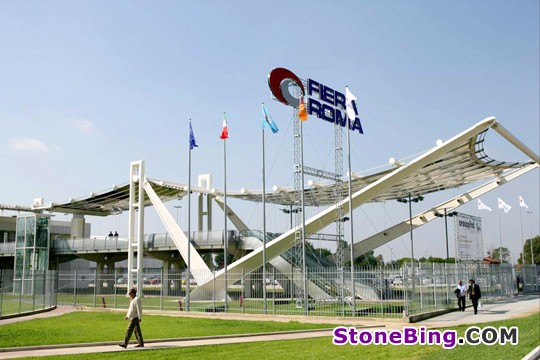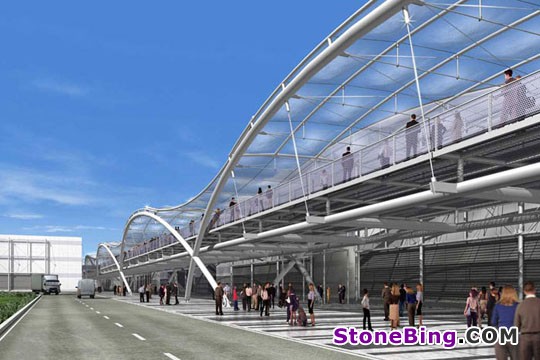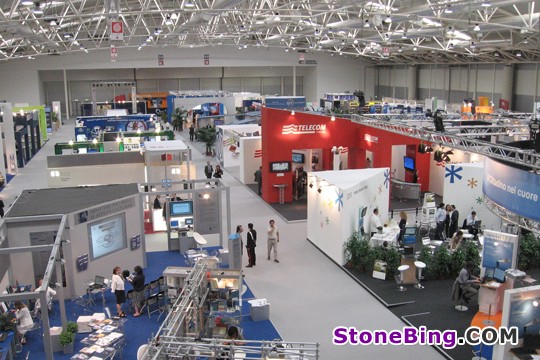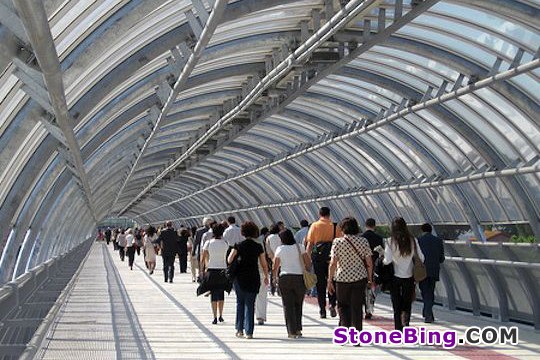Only a year passed after the end of World War II. Half of Europe was still in ruins but the Italian capital already held the ‘Exhibition of Roman Economic Activities’. This became a starting point in a wonderful history of the modern Fiera di Roma Exhibition Centre in the Eternal City.
The first postwar exhibition in Rome in 1946 left its mark in history. Several years after, in 1953, the city’s first exhibition centre, positioned on the important thoroughfare, Via Cristoforo Colombo, was open for business. Gradually adapting to growing demands on the complex, competitive exhibition market, and largely thanks to the initial financial assistance of 26 million lire from the Banca della Cooperazione, the exhibition centre in Rome confidently took the lead on the national and international levels.
1995 saw the transformation of the Independent Rome Trade Fair Body into the joint-stock society entitled Rome Trade Fair Spa, and was the result of the union between the Lazio Regional Body, the Municipality of Rome and the Chamber of Commerce of Rome together with the Province of Rome and other influential organizations. The Roman expocentre functioned like this until the early 2000s, when a completely new fair and convention district opened in the city in 2007 — Nuova Fiera di Roma.
This ‘exhibition city’ is a brainchild of a renowned architect Tommaso Valle. To appreciate all the grandeur of the Nuova Fiera di Roma one must visit this kingdom of modern technologies and materials at least once.
Surely, Italian authorities and businesspeople would not have spent their money on a knowingly loss-making enterprise. And their predictions turned out to be true — the Fiera di Roma generates enormous profit. It is quite understandable, since the center is a starting point for trade and commerce for practically all Mediterranean countries, moreover, its mission is to spread information about economically prosperous Rome and the Lazio region. The history of Rome as a cradle of the European culture and art also contributes to the centre’s success.
The Fiera di Roma Exhibition Centre annually holds more than 50 trade fairs and dozens of conferences. Among the most significant are the exhibitions of Information Technology and Communications (Expo Comm), renewable energy and recycling (ZeroEmission), digital and satellite communications (SAT Expo), dental equipment and materials (ExpoDental), groceries, ice cream, pizza, beer, wine, services of restaurants, bars and hotels (PA.BO.GEL.). The EULAR Congress is the most famous event in Europe in the field of innovative technologies in medicine.
The New Fair District in Rome is composed of a series of binate pavilions, set out in a comb format. All the pavilions are fully cabled and air-conditioned and equipped with the latest technologies. The total area of the complex is 390,000 sq m, of which 30,000 are community parks, 150,000 – indoor exhibition space and business-centres and 70,000 sq m — open exhibition space.
The exhibition area has a total of 4 access points, three of which — East, North and South — have halls and ticket offices. There are also service-centres, rendering on-the-spot services for exhibitors and congress members. From each entrance, one can access the covered elevated walkway which connects all the pavilions.
Eight Italian convention centres (in Rome, Bologna, Verona, Bari, Rimini, Parma and two in Milan) are in the list of the hundred largest expocentres in the world. Italy stands second after Germany (which has 9 complexes in the list) in the ranking of the UFI (the Global Association of the Exhibition Industry).
The territory of the Roman fairgrounds is equipped with a spacious parking lot for 5,000 places.
The congress centre there has two areas: a conference-hall for 5,000 seats can be mounted in Pavilion 9, while Pavilion 10, with the help of mobile sections, can be transformed into 13 individual halls, having the seating capacity from 50 to 1,100.
The centre has three restaurants, accommodating for 2,000 patrons each, as well as 25 bars.
As any world-class convention centre, Fiera di Roma can be accessed by any mode of transport. There is a shuttle bus, a high-speed train and taxis; it also quite easy to reach the center by car. The territory of the New Fair District is operated by a shuttle bus… which rides without a driver! This is a robuRIDE30 robot-bus, designed by the Robosoft Company. With the help of special sensors and software (a computer “brain”) it navigates among the centre’s narrow streets and paths. It is completely impossible to describe how you feel riding in this wonder-bus — you go wherever you need, but instead of the usual driver at the wheel you see... just views of the Fiera di Roma passing by, since the bus hasn’t got any steering wheel to start with.
The robot-bus is, of course, not the only marvel of the Fiera di Roma fairgrounds. This huge ultra-modern exhibition center shows the world that Rome is not just the Eternal City, but that it stays eternally young.












